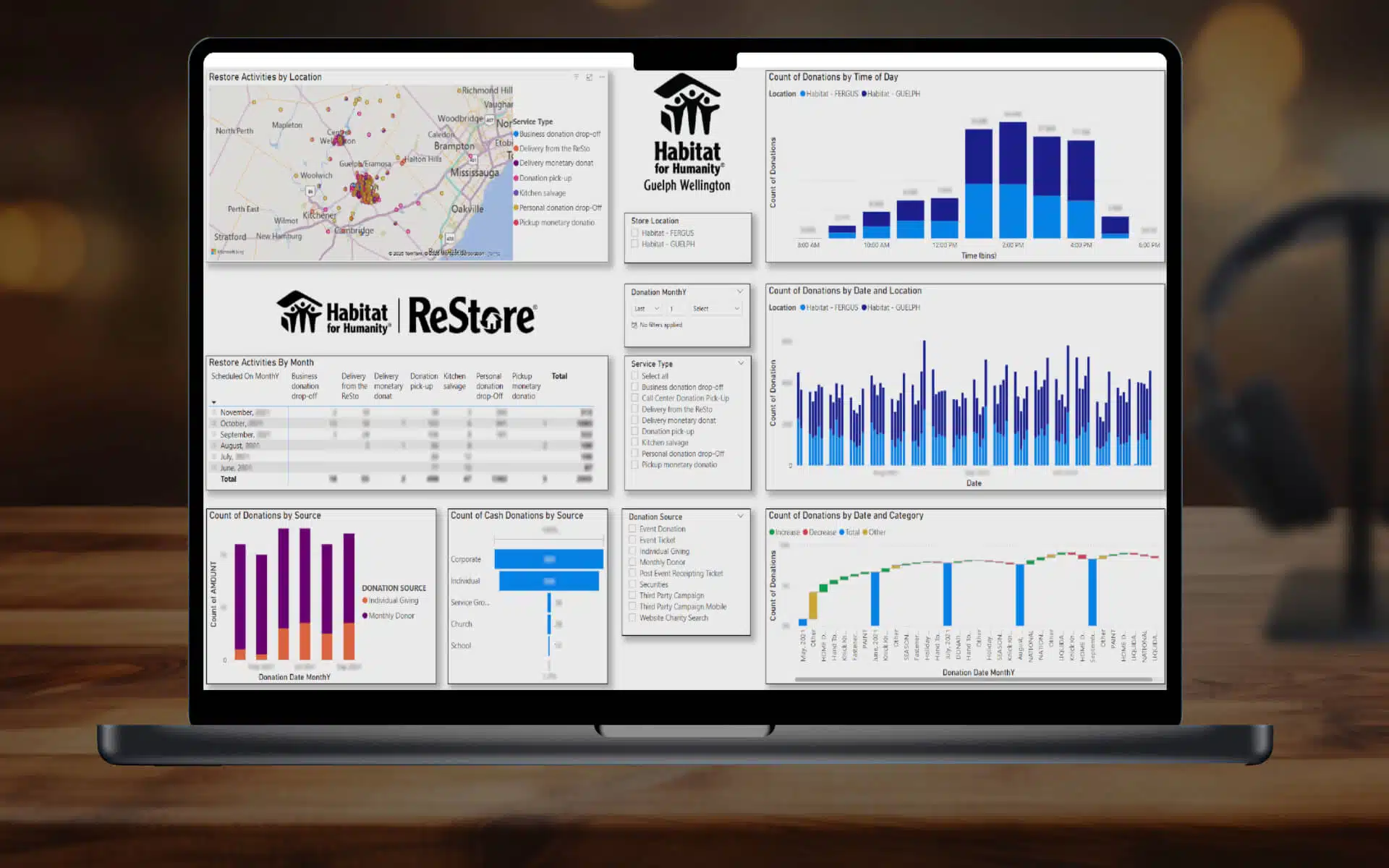Power BI
The Challenge
Habitat for Humanity envisions a world where everyone has a safe and decent place to live. To achieve this vision, Habitat for Humanity partner with families through affordable housing so that they may attain social and financial stability to transform their futures and our community. To achieve its vision Habitat for Humanity performs the following activities:
- Engaging volunteers and partners in the community, the ReStores and on the build site;
- Building and rehabilitating safe affordable family homes;
- Offering a way to build financial stability; creating a potential pathway to homeownership.
To help ensure Habitat for Humanity Guelph Wellington (HabitatGW) meet its goals, a variety of metrics are tracked across many parts of the organization. HabitatGW is required to report to various key stakeholders: Board of Directors, Canadian Mortgage and Housing Corporation (CMHC), Habitat for Humanity Canada, and corporate sponsors and partners. Having quick and easy access to this data ensures effective service to our customers, volunteers, partner families, and staff. HabitatGW’s problem was as an organization governed by a Board of Directors, reporting into Habitat Canada, and CMHC, it is required to report various metrics to many different stakeholders.
The data previously came from multiple systems (Point-of-Sale, Dispatch, old CRM database), Excel trackers and paper records. The data was compiled into reports/newsletters/spreadsheets and disseminated to HabitatGW’s stakeholders. The compilation of this data was a manual process that led to errors which took time and resources away from ensuring HabitatGW affordable housing initiatives are as successful as possible.
Our Solution
MERAK Systems Corporation created a Power BI report that connected all systems within HabitatGW’s environment so that HabitatGW staff could have centralized visibility on their operations. The report has automated or dramatically reduced the amount of time required by HabitatGW staff to meet their reporting requirements and now serves as a foundation for building a data culture within organization.
Last Updated: June 25, 2025



